All about trailers for walk-behind trailers

Using a walk-behind tractor in a household is almost impossible without a trailer. Such a trolley allows you to significantly expand the range of applications for the device. Mainly it allows you to transport a wide variety of goods.
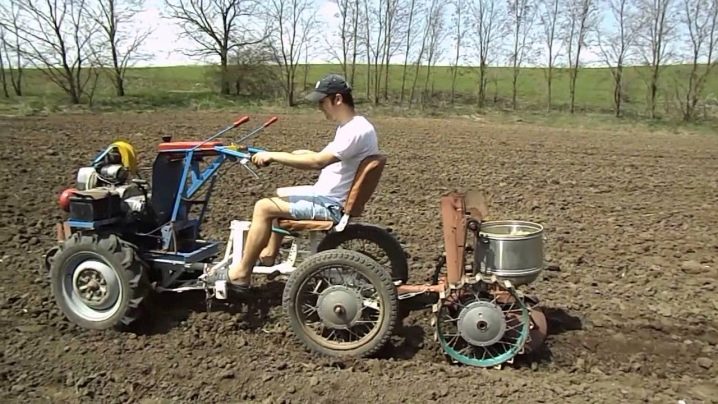
Specifications
The trailer, which is very often called a trolley, is used to transport goods, as well as complete with a walk-behind tractor as a vehicle. The movement speed of the trolley coupled to the walk-behind tractor is 10 kilometers per hour. This device not only allows you to transport cargo over difficult terrain, but also enhances the stability of the walk-behind tractor. In general, the standard dimensions of the bogie bodies are as follows: 1.5 m in length, 1 m and 15 cm in width, as well as a height of 27-28 cm. for which there are four main device models.
- It can be a single-axle tipper truckcapable of carrying up to 250 kilograms of cargo. The trailer weighs 56 kilograms, its length corresponds to 110 centimeters, and its width is 90 centimeters. The height of the sides of such a cart reaches 35 centimeters.
- A two-axle chassis bogie is availablecarrying 500 kilograms of cargo. She herself weighs 40 kilograms. The height of the sides of the trolley is the same as that of a uniaxial one, however, like all other parameters.
- The TMP trolley is suitable for the "Neva", which will manage to take away 250 kilograms. The structure itself weighs the most - as much as 150 kilograms. The trolley is 133 centimeters long, 110 centimeters wide, and the sides are thirty centimeters high.
- There is a TMP-M trolley. She herself weighs 85 kilograms, and her carrying capacity is 150 kilograms. The sides in this case reach a height of 25 centimeters, a length of 140 centimeters, and a width of 82.5 centimeters.
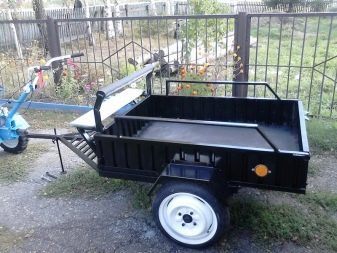
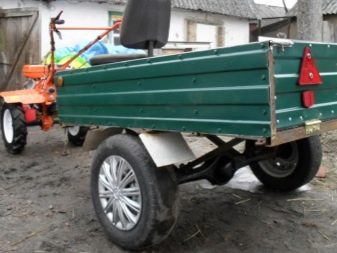
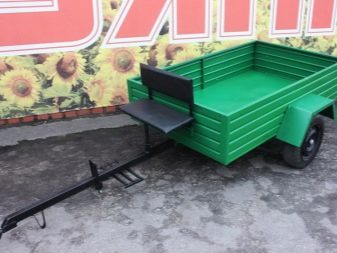
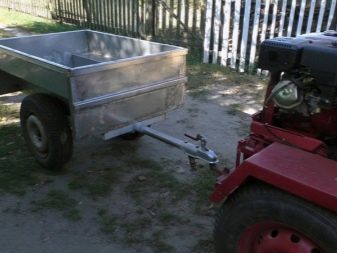
Despite the available 4 models, in the case of the "Neva" it will be possible to attach other trolleys to the walk-behind tractor, if you first select a universal hitch.
Design features
Trailers usually consist of a specific set of parts, which include the body, fenders, brakes, seats, drawbars and hub wheels. The most suitable bodies are made of galvanized steel, which will not deteriorate under negative weather conditions. It is also important to have folding sides for stowing and retrieving the transported goods. In principle, the bodies are quite voluminous, therefore, to transport 500 kilograms, a structure whose width does not exceed 1.2 meters will be enough. It is important to understand that it will depend on the characteristics of the body how much cargo and in what quantity can be transported.
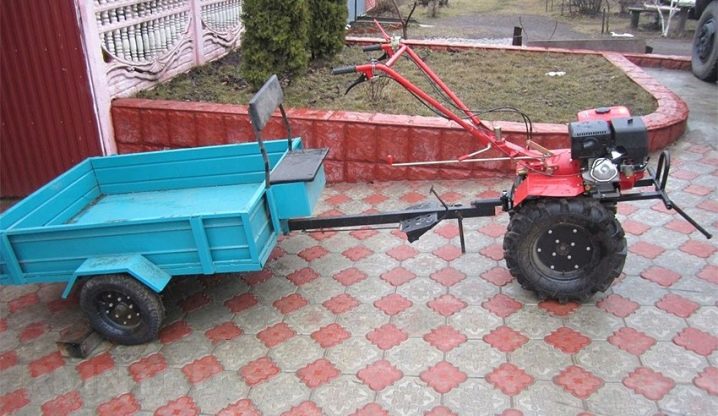
Optimum wheel sizes are 4 by 10 inches - such will be able to move through difficult terrain, even with heavy loads. In the event that the trailer is to be actively used for agricultural work, it is necessary to select reinforced wheels that can move even on sticky soil. The drawbar is a part due to which the trailer is attached to the walk-behind tractor itself. It is important to mention that the drawbar hitch is not suitable for every trailer, so when buying it is important to consult with a specialist or initially choose a universal model.
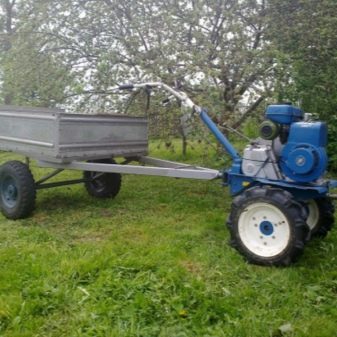

Trailer fenders are mounted above the wheels and protect them from pebbles and large clods of dirt. The presence of a seat with a box allows you to store any items in the trailer on a permanent basis. As for the brakes, their presence in the trolley is mandatory in the case when it is planned to carry a large amount of heavy load. This detail will provide not only convenience, but also the safety of transportation for the driver and others. Typically, a trailer requires two types of brakes: a standing hand brake and a band brake. Unloading, as a rule, occurs when using the first type.
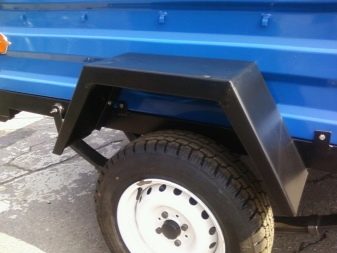
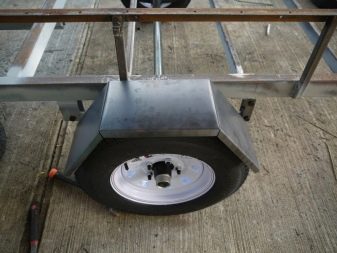
It should be noted that an adapter for a walk-behind tractor is often used as a trailer, to which the cart is already attached. It can be used to carry out agricultural work, including transporting goods without getting down from the seat.
Varieties
Trolleys for a walk-behind tractor differ in size and design.
- It can be a single-axle and two-axle trailer, with two or four wheels.
- The cart comes with a folding body or folding sides. More sophisticated models are equipped with an automatic body lift.
- Today, there are one-piece indestructible structures and collapsible ones, which are very convenient for owners of small farmlands.

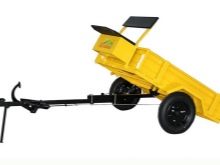
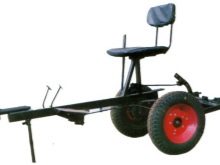
As mentioned above, the trailer is made of various materials, with a galvanized sample being considered the best. The carts differ by purpose: it can be a dump trailer, in which it is allowed to transport absolutely any cargo, or a device without a solid bottom, capable of handling only non-loose objects. The dump trailer comes in various sizes, there is even a mini-trailer. In winter, you certainly cannot do without a trailer capable of skiing. Specialists also single out the trailer.
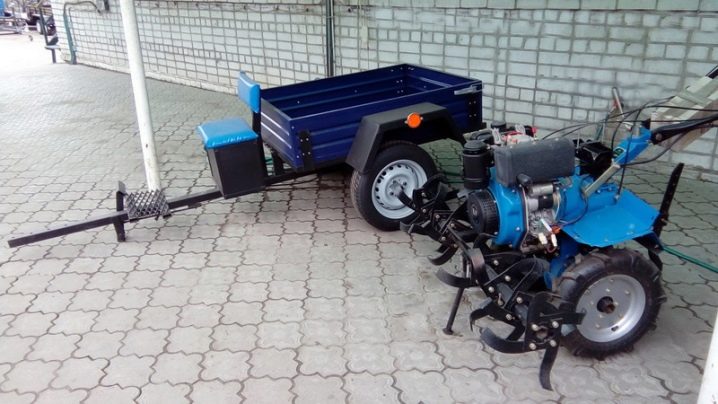
Brand rating
When choosing a trailer, first of all, it is important to take into account the power of the existing walk-behind tractor. Then it is worth evaluating the brakes and carrying capacity, whether there are folding sides available. Carts are usually made of plastic, regular steel or galvanized metal, the latter being considered the most robust. All of them are not intended for use on busy highways and, of course, highways. To avoid dangerous situations, trailers should be used off the roads on which passenger cars drive.

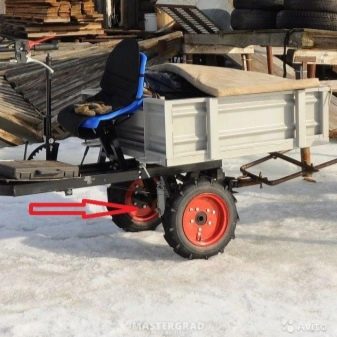
The Forza trolleys, suitable for Neva motoblocks, are well-deservedly popular. Their carrying capacity reaches 300 kilograms, and the weight of the equipment itself varies from approximately 45 to 93 kilograms. More complex models are equipped with a single seat and cost about 10 thousand rubles. Experts also recommend the MTZ Belarus brand, which produces small-sized reliable and versatile designs. Trailers of the "Centaur" brand, as a rule, move on pneumatic wheels and have three folding sides, which greatly simplify loading and unloading. In addition, the advantages of this brand include mechanical drum brakes.

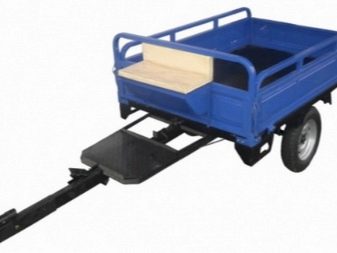
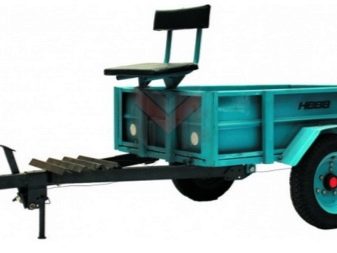
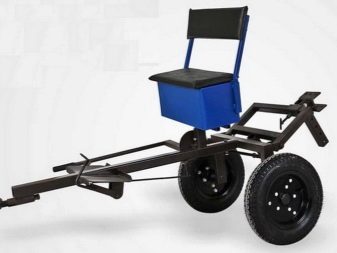
The trailer for the Salyut-100 walk-behind tractor, the Kraz and Zubr trolleys, and the Patriot Boston 6D also perform well.
How to fix it?
In order to easily connect the trailer to any moving walk-behind tractor, the attachment to the latter must be universal. In addition, it should be borne in mind that if a backlash occurs, the fastening of the walk-behind tractor can be strengthened by welding an additional metal layer or replacing a part of the drawbar. Experts recommend giving preference to more complex couplings over a conventional pin. There are different types of fasteners, some are suitable not only for fastening the trolley itself, but also for other equipment.
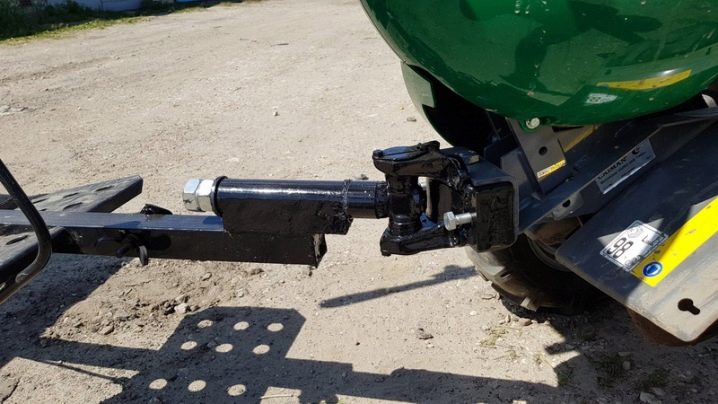
If the walk-behind tractor is heavy, then the trailer must be fastened using a reinforced hitch. If, in some difficult situation, the hitch does not fit into place, then an adapter with a hook must be installed.The car trailer to the walk-behind tractor should be fastened with a similar hitch.
Operating tips
Before using a trailer already connected to the walk-behind tractor, it is important to study the instructions of both equipment in order to avoid injury. It will be imperative to check how the brakes work and, if necessary, adjust them. This is done as follows: the trailer is driven without load and it is assessed whether the brakes are working. In addition, it is necessary to find out how well the cart is attached to the walk-behind tractor, and the parts of the trailer itself are connected to each other. It is worth assessing the degree of tire pressure, the presence of grease in the bearings, and whether the device is in good working order at all.

When working with a trailer, remember that it is forbidden to transport people or excess loads in the body. As mentioned above, it is unacceptable to drive on public roads, as well as to move at an increased speed. Children under the age of fourteen must not work with the trailer, and no one can arrange a technological inspection when the body of the device is in a raised state. Finally, it is important to mention that the operation of a trailer together with a walk-behind tractor when visibility is limited is strictly prohibited.
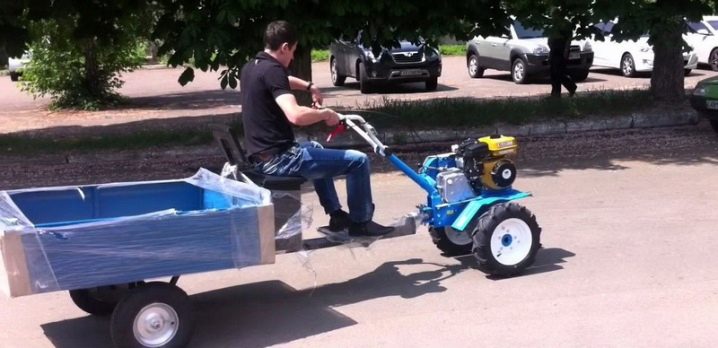
The load can be put into the trailer and taken out only when the cart is secured with a brake. The body cabin is filled so that all four wheels have an equal load, and the center of gravity is located on the geometric axes. Unloading should take place according to a certain pattern: first, the board is either removed or opened, and the holding rod is removed from the latches. Next, the body tilts over and, if necessary, is fixed in a comfortable state. Upon completion of the extraction of the goods, the assembly is carried out in the reverse order. At the very end, the trailer is cleared of dirt and debris left over from the load itself.
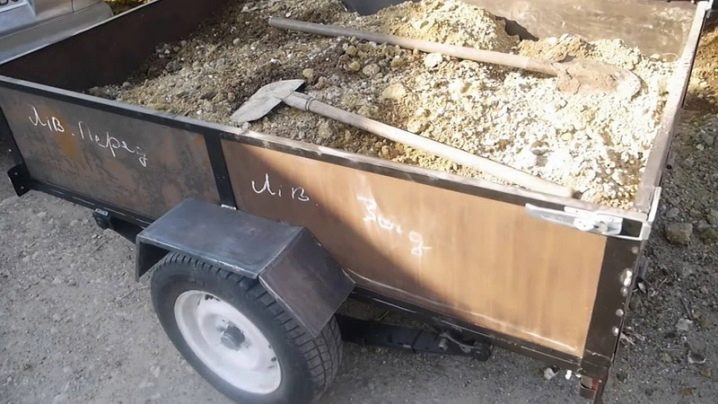
Once a year, the hub must be disassembled, and the bearings are lubricated with a special grease. The brakes are adjusted using a special nut that changes the length of the link. From time to time, it will be necessary to assess the condition of the fasteners, and this should be done both before and during operation. If necessary, everything is immediately tightened. When removing the cart for long-term (for example, winter) storage, it is necessary to clean all the parts, replace those that are out of order and tint the device. The tires deflate slightly and the trailer is moved either under the canopy or indoors. For fixing, you have to use special stands or install the trolley on the rear side, while lowering the frame.
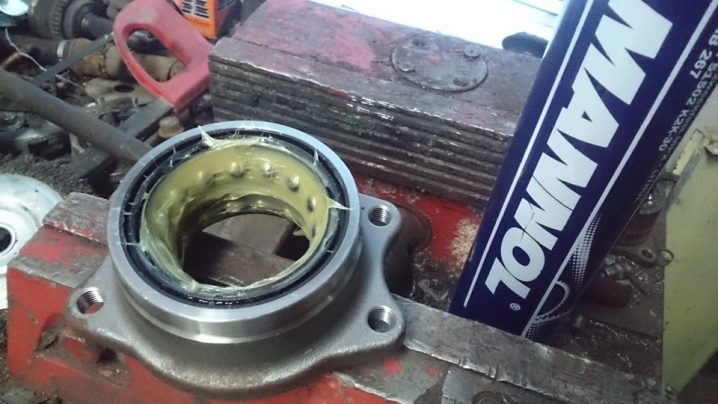
Thus, you have become familiar with the general characteristics of walk-behind tractors. You also learned the subtleties and secrets of attaching a trailer to a walk-behind tractor. In order to purchase and properly install the device, you should follow the advice of specialists and take into account all the recommendations. Also, when buying, pay attention to the brand and manufacturer.
For information on how to attach a trailer to a walk-behind tractor, see the next video.



































































The comment was sent successfully.